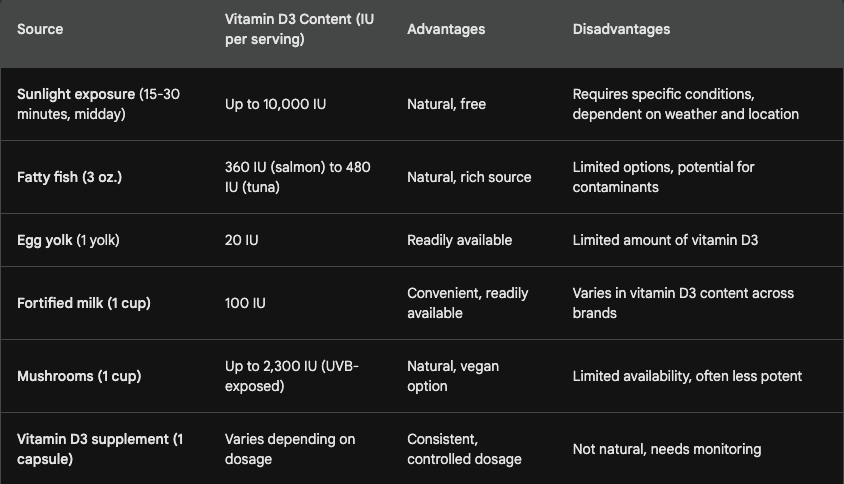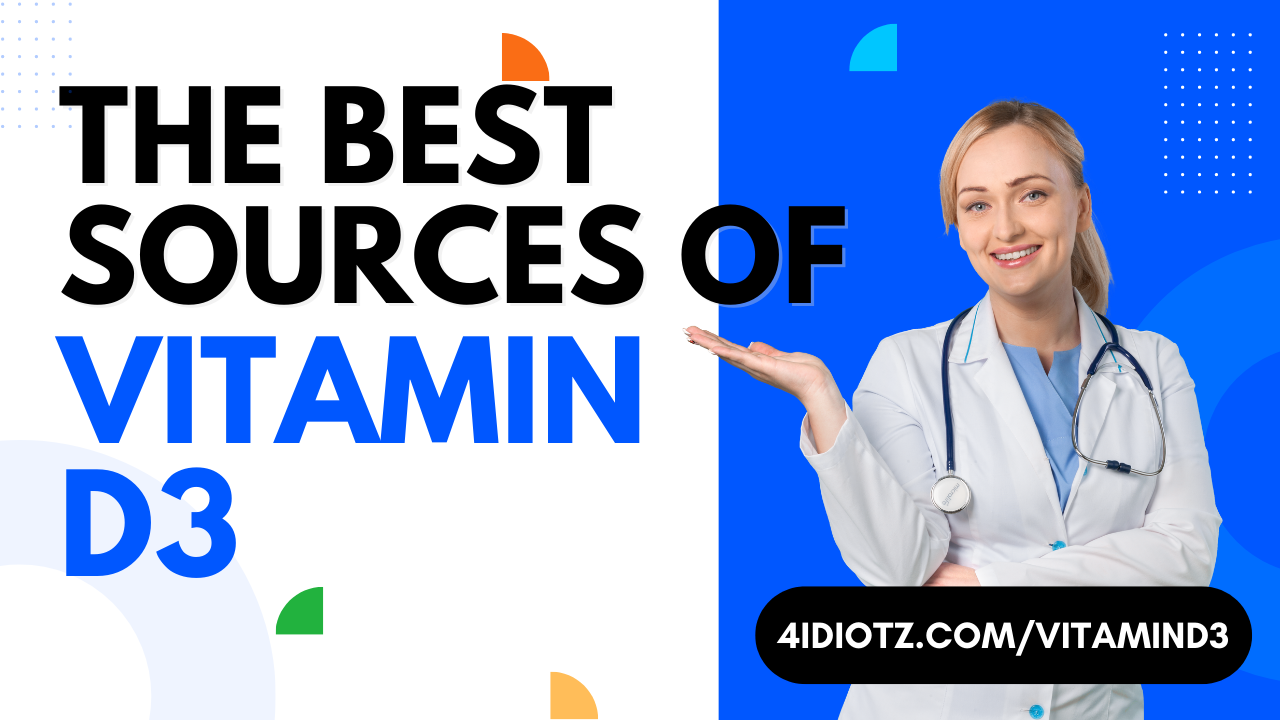What are the best sources of vitamin D3? Vitamin D3, also known as cholecalciferol, is a fat-soluble vitamin essential for various bodily functions. It plays a crucial role in bone health, immune system function, muscle strength, cell growth, and even mental health. While the nickname “the sunshine vitamin” suggests sunlight as the primary source, several other options can help ensure adequate vitamin D3 levels.
Why Is Vitamin D3 Important?
Vitamin D3 plays a vital role in several vital processes within the human body, including:
- Promoting bone health: Vitamin D3 facilitates calcium absorption from the gut, crucial for building and maintaining strong bones. Deficiency can contribute to osteoporosis, increasing the risk of fractures.
- Supporting immune function: Vitamin D3 regulates the immune system, enhancing its ability to fight infections and diseases.
- Enhancing muscle strength: Adequate vitamin D3 levels contribute to stronger muscles, improving balance and reducing fall risk, which is especially important for older adults.
- Promoting cell growth and differentiation: Vitamin D3 is essential for cell growth and differentiation, influencing various processes like cell proliferation and programmed cell death.
- Potentially impacting mental health: Research suggests a link between vitamin D3 and improved mood, potentially playing a role in preventing depression.
Identifying the Best Sources of Vitamin D3:
While sunlight exposure is often considered the primary source of vitamin D3, several other options can help you maintain adequate levels:
Sun Exposure:
- The most natural way to obtain vitamin D3 is through sunlight exposure. When UVB rays from the sun hit the skin, it triggers the synthesis of vitamin D3.
- Factors like duration and intensity of exposure, season and location, and skin pigmentation influence the amount of vitamin D3 produced.
- While regular exposure is beneficial, excessive sun exposure can be harmful. Aim for moderate daily exposure while practicing sun protection.
Dietary Sources:
- Fatty fish: Excellent sources of vitamin D3 include salmon, tuna, mackerel, and sardines.
- Egg yolks: One egg yolk provides about 20% of the daily recommended intake of vitamin D3.
- Fortified foods: Many foods like milk, yogurt, cereal, and orange juice are fortified with vitamin D3.
- Mushrooms: Certain mushrooms exposed to UV light can contain vitamin D3.
Supplements:
- Vitamin D3 supplements are readily available and a good option for individuals who don’t get enough sunlight or through diet.
- Consulting a healthcare professional is crucial to determine the appropriate dosage and ensure safe supplementation.
Comparing the Best Sources of Vitamin D3:
Here’s a quick comparison of the best sources of vitamin D3:

Optimizing Vitamin D3 Intake:
To ensure adequate vitamin D3 levels, consider a combination of sources:
- Regular moderate sun exposure during peak hours.
- Including a variety of vitamin D3-rich foods in your diet.
- Consulting a healthcare professional to discuss supplementation if necessary.
Conclusion:
Finding the best sources of vitamin D3 is to maintaining optimal vitamin D3 levels is crucial for overall health and well-being. While sunlight exposure offers the natural way to obtain vitamin D3, dietary sources and supplements can contribute significantly. By incorporating various sources and customizing your approach based on individual needs and preferences, you can ensure you get the essential vitamin D3 your body requires.
Tags:
Vitamin D3, Sunlight exposure, Dietary sources, Fortified foods, Supplements, Bone health, Immune system, Muscle strength, Cell growth, Mental health
A PDF version of thge article can be found by clicking here.
